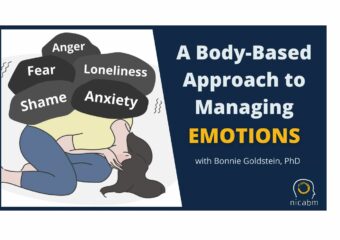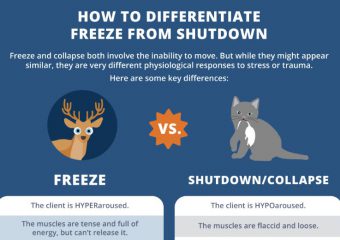When clients have a low threshold for tolerating difficult emotions, their lives can become extremely limited. Instead of working through the challenges that can lead to new opportunities, they may choose to stay with the relative “safety” of what they know – even if it’s dysfunctional. So in the video below, Bonnie Goldstein, PhD, walks […]
Working with the Freeze Response in the Treatment of Trauma with Stephen Porges, PhD
When a client freezes during a session, how do you help them come out of their trauma response (without further triggering them)? This can be challenging because proximity, movement, and eye contact can all feel threatening to a client who is frozen and hyper-aware of danger. So in the video below, Stephen Porges, PhD, shares […]
[Infographic] How to Differentiate Between the Freeze and Shutdown Trauma Responses
The freeze and shutdown responses to trauma can resemble each other . . . . . . but they are very different in terms of what’s happening in your client’s brain, body, and nervous system. And that means they require different grounding strategies as well. In this infographic, we lay out some key cues to […]
The Neuroscience of Mindfulness and Fear
When a client is afraid, there’s a practice that can help them stay grounded in the present . . . . . . instead of getting hijacked by panic and “worst-case scenario” thinking. And that practice is mindfulness. In the video below, Tara Brach, PhD will get into how mindfulness disrupts the neurobiology of fear, […]
Practical Ways to Improve Telehealth Sessions
A lot of practitioners have made the switch to telehealth sessions during the COVID-19 pandemic. But seeing patients on a computer screen can be surprisingly exhausting. Beyond that, it can introduce new clinical challenges to the session. In the video below, Christine Padesky, PhD and Ron Siegel, PsyD will get into some practical ideas to […]




